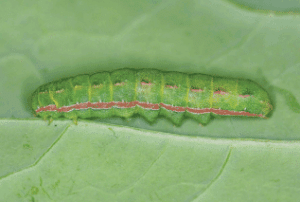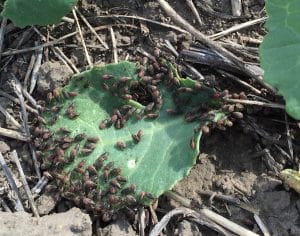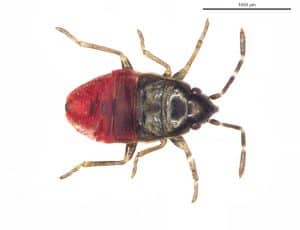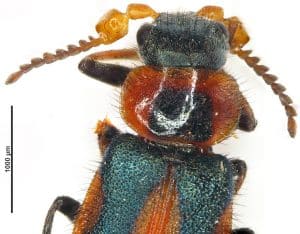Diamondback moth. Trap counts are low so far but have been picking up over the past couple of weeks. This makes us think of 2017. Even with low trap counts through the monitoring period last year, larvae numbers were surprisingly high in some fields. Dry conditions could mean higher than usual survival, so hot spots can appear. This article explains the situation last year and includes tips for scouting this year.
Bertha armyworm. Trap counts of bertha armyworm adult moths are low to date across the Prairies. Alberta map
Cabbage seedpod weevil. Early-flowering fields are often at highest risk in known cabbage seedpod weevil areas. Some areas in southern Alberta are reporting counts above economic thresholds. CSPW were officially reported in Manitoba (southwest corner) for the first time in 2017 and Manitoba Agriculture will monitor for them in 2018. Cabbage seedpod weevil: Early fields at greatest risk

Clover cutworms. Clover cutworm damage has been confirmed in a few fields around Weyburn, Saskatchewan. They are a climbing cutworm and can be easily confused with bertha armyworm. The most distinct difference between the two species is the wide stripe along each side; it is yellowish pink on clover cutworm and yellowish orange on bertha armyworm.
Little red bugs. The little red bugs, nymphs of Peritrechus convivus, (see the photos below) were doing some damage in a few isolated patches again in 2018. The common name of this genus of insects is dirt-coloured seed bugs. Adults lose their red colour (hence the term “dirt-coloured”), so images through an online search can be confusing if someone is trying to ID a nymph from their field with an image of an adult online. As for damage, they feed on sap and can leave plants withered and lifeless. These bugs are not registered on any product labels, but farmers who think they have a patch at economic levels could try a product approved for sucking insects in canola such as lygus. Although given that they’re small targets deep in the canopy, perhaps reduce expectations. Also keep in mind that the Collops (vittatus) beetle, a generalist predator of soft-bodied insects, has been found around the red bugs and may be eating them. Collops beetles look a bit like red turnip bug with colours reversed (see the bottom photo below). Antennae look like wiggly fun straws and the males have a distinctly swollen second antennal segment.




